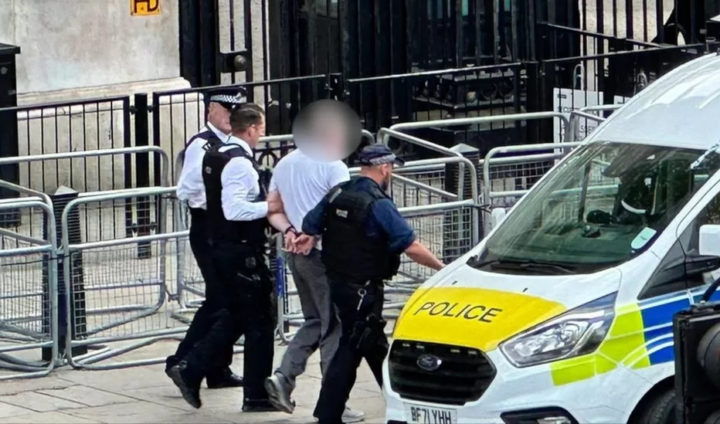A man has been arrested after a car crashed into the gates of Downing Street. The Metropolitan Police stated that he was detained on suspicion of criminal damage and dangerous driving, but the incident is not being treated as terrorism-related. Witnesses reported seeing officers pointing tasers at the man, who was apprehended and held face down. Fortunately, no injuries were reported, and it was confirmed that Rishi Sunak, the Prime Minister, was inside Downing Street at the time.
Following the incident at 16:20 BST, a portion of Whitehall, the main road that passes through several government offices, was partially evacuated. However, the road has since reopened to traffic, and the police cordon has been lifted. The car involved in the crash, a 2009 silver Kia registered in London, was later loaded onto a police recovery vehicle and removed from the scene. Law enforcement officers were observed searching the vehicle and retrieving a mobile phone, which was placed in an evidence bag. Forensics officers and sniffer dogs were also present.
Witnesses described hearing a loud bang and seeing a swift response from numerous police vehicles, leading to the area being evacuated. Some individuals appeared panicked, while others seemed excited in the aftermath of the incident.
Footage captured by a BBC camera depicted the car slowing down as it approached the main entrance of Downing Street after crossing two lanes from the southbound side of Whitehall. Although the entrance to the street is continuously staffed by armed and unarmed police officers, it remains accessible by road through Whitehall.
Both the Prime Minister and the Chancellor were present in Downing Street at the time of the crash. Rishi Sunak later left for a scheduled visit. BBC political correspondent Helen Catt, reporting from the scene, noted that the gate suffered minimal damage and that Whitehall had returned to its normal state, with people freely entering and exiting Downing Street on foot.
Conservative MP Tobias Ellwood, who experienced the Westminster terror attack in 2017, remarked on the delicate balance between public access and security measures surrounding significant buildings. While acknowledging that security measures have made Westminster feel safer since the 2017 attack, he expressed ongoing concerns. He emphasised the importance of balancing the opening of iconic places of interest with the duty of care towards those living and working in the Westminster area, particularly around No 10.
Frank Gardner, the BBC’s security correspondent, highlighted the extensive preparation undertaken by the police for rapid response in central London following prominent attacks worldwide. Any security alert near a landmark site inevitably triggers a substantial response. Downing Street has been targeted in the past, as evidenced by the 1991 incident when members of the Provisional IRA fired homemade mortar shells at No 10, resulting in injuries to four individuals.







